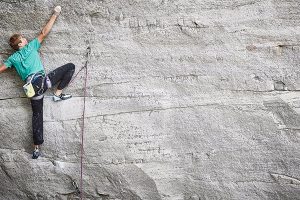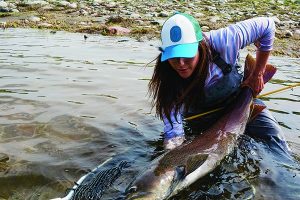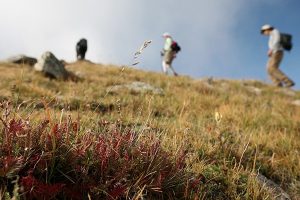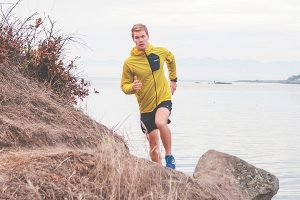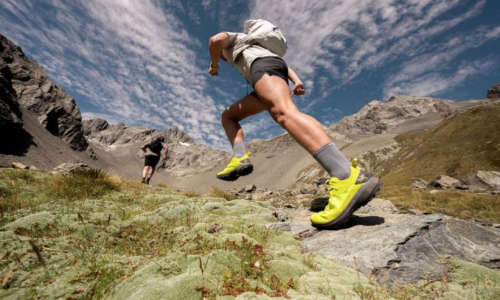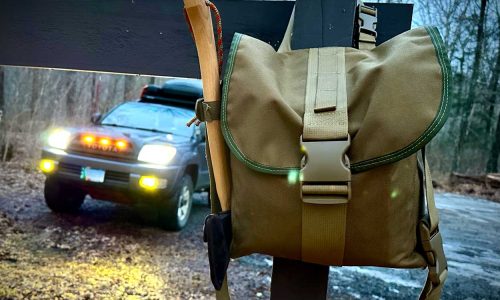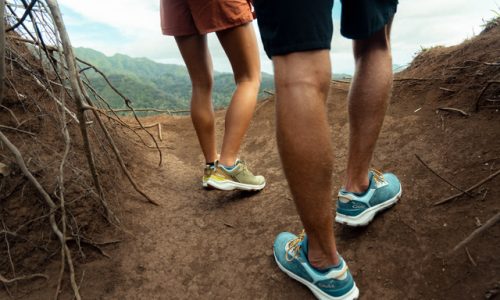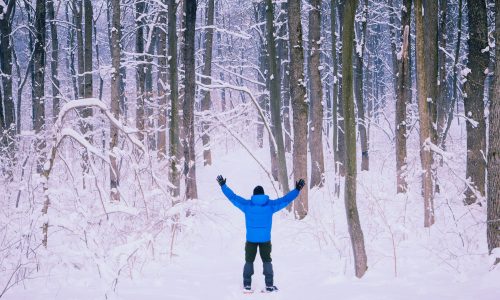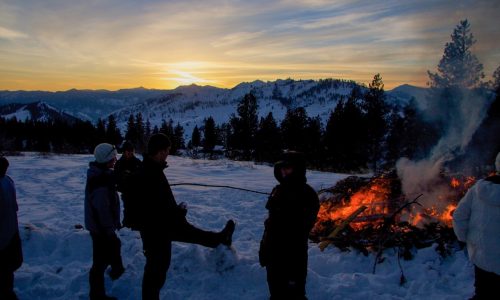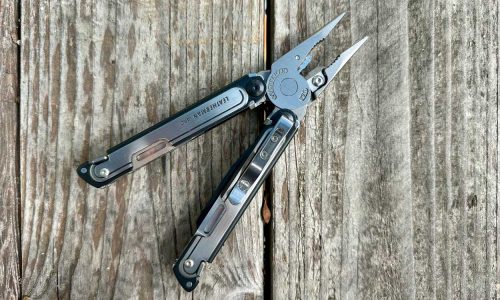Ultralight backpacking can mean many things depending on who you are and what you’re trying to accomplish on the trail. There’s the ultralight cut the handle from your toothbrush types, but there’s also a broad range of folks who are regular or even just casual backpackers who want to save a few ounces here and there but aren’t into making major sacrifices. We all have to find that balance for ourselves and this guide aims to provide some inspiration. Listed below we have a number of items that are some of the lightest in their class. While staunch ultralight-eliteists may scoff at some (0r all) of the suggestions, most folks should be able to find a few items that are lighter than what they’re carrying now to make a nice upgrade or addition in their gear stash.
Osprey Levity Pack
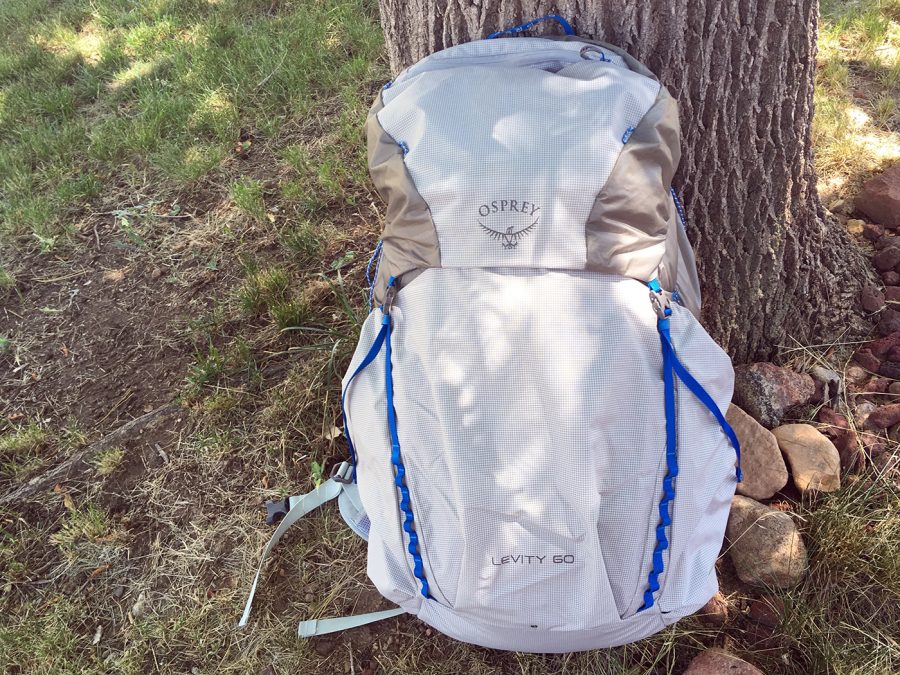 As arguably the most important piece of gear you take on a trip, because it’s what lets you take a trip, backpacks are often given a pass in the ultralight backpacking kit. The pack needs to be comfortable considering it’s probably the one piece of gear that gets the most use and is strapped to your body. Osprey has been in the pack business since 1974 and they have won numerous Best In Class awards from this website (and considering those awards come from lots of different testers that’s pretty telling). They have taken all that incredible experience and those successful creations and applied it all to creating a pack so light they describe it with a double descriptor: the superultralight. And it is. We even gave it a Best New Gear Award when it was announced in part because even the large frame size just barely bumps above two pounds. The small and medium versions are under two pounds. Since the pack is designed for the ultralight backpacking crowd, the expectation is those users are trying to carry as little weight as possible. So even though it’s a 60-liter pack (it also comes in a 45-liter), the expectation by the design team is for the load in the pack not to push much past 30 pounds, which can be a challenge for many backpackers, especially early on the trip when packs are full of food. I found the pack to carry fine even when weights push above 30 pounds, but it was only for a day or two as I ate my way through that weight (and got rid of the weight with the help of the Vargo tool above). $270 | Buy Now
As arguably the most important piece of gear you take on a trip, because it’s what lets you take a trip, backpacks are often given a pass in the ultralight backpacking kit. The pack needs to be comfortable considering it’s probably the one piece of gear that gets the most use and is strapped to your body. Osprey has been in the pack business since 1974 and they have won numerous Best In Class awards from this website (and considering those awards come from lots of different testers that’s pretty telling). They have taken all that incredible experience and those successful creations and applied it all to creating a pack so light they describe it with a double descriptor: the superultralight. And it is. We even gave it a Best New Gear Award when it was announced in part because even the large frame size just barely bumps above two pounds. The small and medium versions are under two pounds. Since the pack is designed for the ultralight backpacking crowd, the expectation is those users are trying to carry as little weight as possible. So even though it’s a 60-liter pack (it also comes in a 45-liter), the expectation by the design team is for the load in the pack not to push much past 30 pounds, which can be a challenge for many backpackers, especially early on the trip when packs are full of food. I found the pack to carry fine even when weights push above 30 pounds, but it was only for a day or two as I ate my way through that weight (and got rid of the weight with the help of the Vargo tool above). $270 | Buy Now
MSR Carbon Reflex 1 Solo Backpacking Ultralight Tent
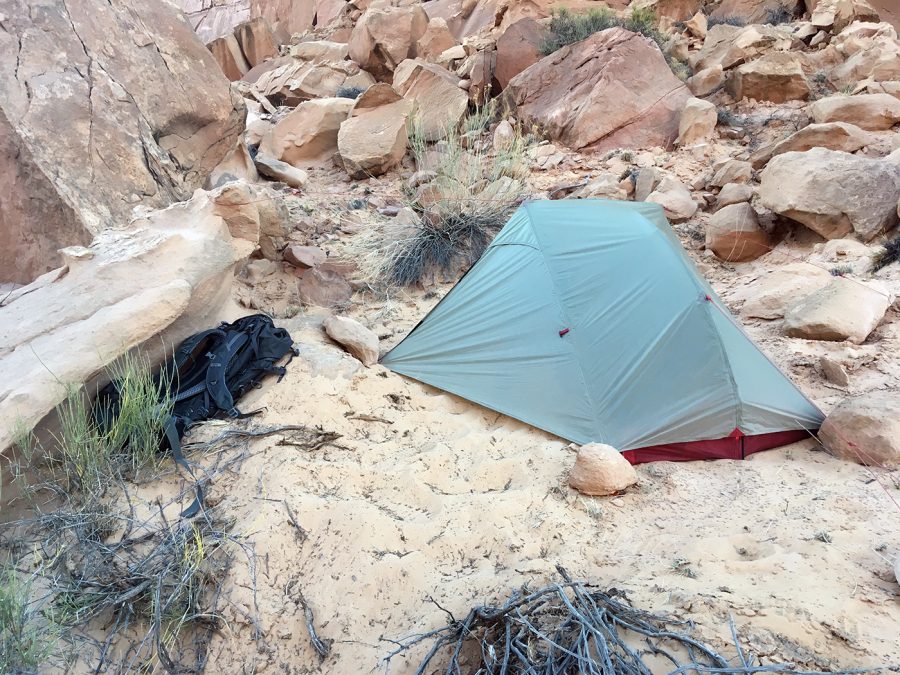 While some will argue that a tent isn’t really necessary on the trip I was on, it turned out to be a nice break from the wind. Granted, the all mesh body of the tent did allow the super find sand kernels to blow in, but it was still better than being out fully exposed to the wind and getting sandblasted as I was getting ready for bed. It’s also nice to have a way to prevent scorpions or other curious critters from finding their way into my sleeping bag for a rude surprise. Could any three season mesh tent have done this job? Yes. But not for the weight savings on the hike in. This tent weighs just a skosh over a pound and is truly just for one person. It also advertises enough room to sit up in it, but at 5’11” and sitting upon the 2.5” thick Therm-a-Rest NEOAir XTherm sleeping pad, my head rubbed against the top mesh every time I sat up. This wasn’t a big deal since the desert is so dry and there wasn’t usually much condensation on the inside of the fly, but it would have been a bummer in wetter environs.
While some will argue that a tent isn’t really necessary on the trip I was on, it turned out to be a nice break from the wind. Granted, the all mesh body of the tent did allow the super find sand kernels to blow in, but it was still better than being out fully exposed to the wind and getting sandblasted as I was getting ready for bed. It’s also nice to have a way to prevent scorpions or other curious critters from finding their way into my sleeping bag for a rude surprise. Could any three season mesh tent have done this job? Yes. But not for the weight savings on the hike in. This tent weighs just a skosh over a pound and is truly just for one person. It also advertises enough room to sit up in it, but at 5’11” and sitting upon the 2.5” thick Therm-a-Rest NEOAir XTherm sleeping pad, my head rubbed against the top mesh every time I sat up. This wasn’t a big deal since the desert is so dry and there wasn’t usually much condensation on the inside of the fly, but it would have been a bummer in wetter environs.
I found the closure of the fly using a hook-and-eye with Velcro strips system to be fine. I liked the idea of not having a zipper there both for weight savings (no, I didn’t weigh the individual components against what a zipper would weigh) and for removing the chance of the zipper snagging or breaking especially where small bits of sand could interfere. As it turns out, the zipper of the main body door didn’t have any problems in the sand. I did end up packing MSR’s bigger Blizzard Tent Stakes to better handle the soft sand instead of the super thin stakes included with the tent.
If weight savings is really at the top of your list, this tent is a great option. If you can afford another $100 and don’t mind an extra 6 ounces the two person version will significantly increase the internal comfort for a single person in the tent. $299 | Buy Now
Flylow Rainbreaker
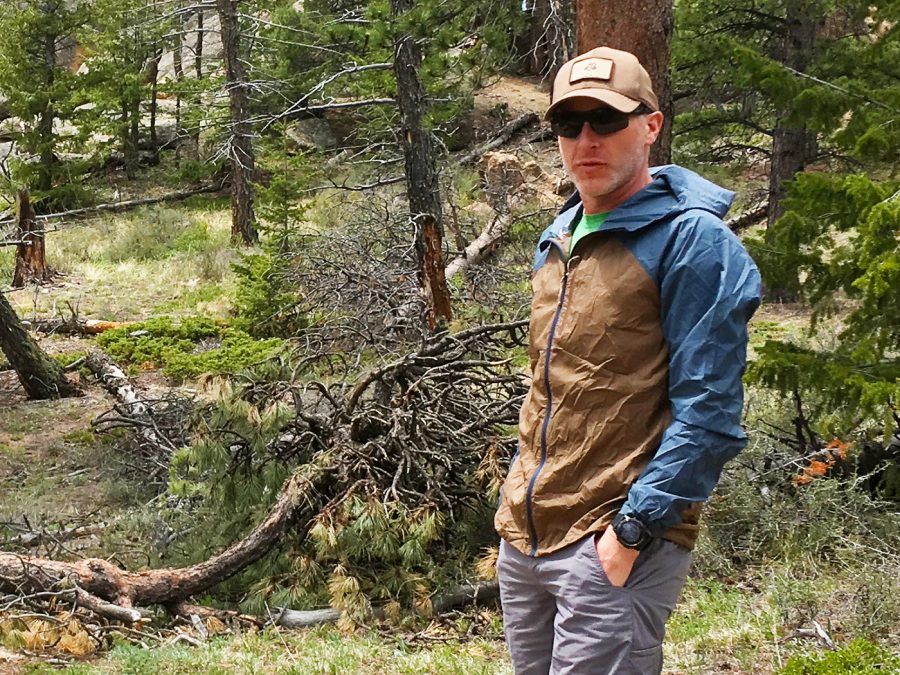 Made with 20D and at a mere 47g/m2, this jacket only weighs 5.5 ounces (Men’s Medium) by my scale and yet it boasts 3k water column waterproofness. Add to that good seam taping, a DWR finish and YKK zippers and this becomes a jacket that goes into my pack no matter where I’m going. To be fair, I have yet to wear this jacket in a total deluge, but I have no doubt it could ward off a pretty serious storm for the time needed to find structural refuge. Nevertheless, it has served well a number of times while backpacking and on day hikes where afternoon Colorado storms have blown in. Overall, the design is excellent. The hood fits nicely, the hems are cut on a good line and it’s a good length. My only gripe is how only half of each of the cuffs are elastic so it can be a little bit of work to get my watch through when putting the jacket on or getting it around my wrists when taking it off. But, the advantage there is it provides good protection to help prevent water from dripping into the sleeves when hands are held aloft. $140 | Buy Now
Made with 20D and at a mere 47g/m2, this jacket only weighs 5.5 ounces (Men’s Medium) by my scale and yet it boasts 3k water column waterproofness. Add to that good seam taping, a DWR finish and YKK zippers and this becomes a jacket that goes into my pack no matter where I’m going. To be fair, I have yet to wear this jacket in a total deluge, but I have no doubt it could ward off a pretty serious storm for the time needed to find structural refuge. Nevertheless, it has served well a number of times while backpacking and on day hikes where afternoon Colorado storms have blown in. Overall, the design is excellent. The hood fits nicely, the hems are cut on a good line and it’s a good length. My only gripe is how only half of each of the cuffs are elastic so it can be a little bit of work to get my watch through when putting the jacket on or getting it around my wrists when taking it off. But, the advantage there is it provides good protection to help prevent water from dripping into the sleeves when hands are held aloft. $140 | Buy Now
Vapur Element 0.7L Collapsible Water Bottle
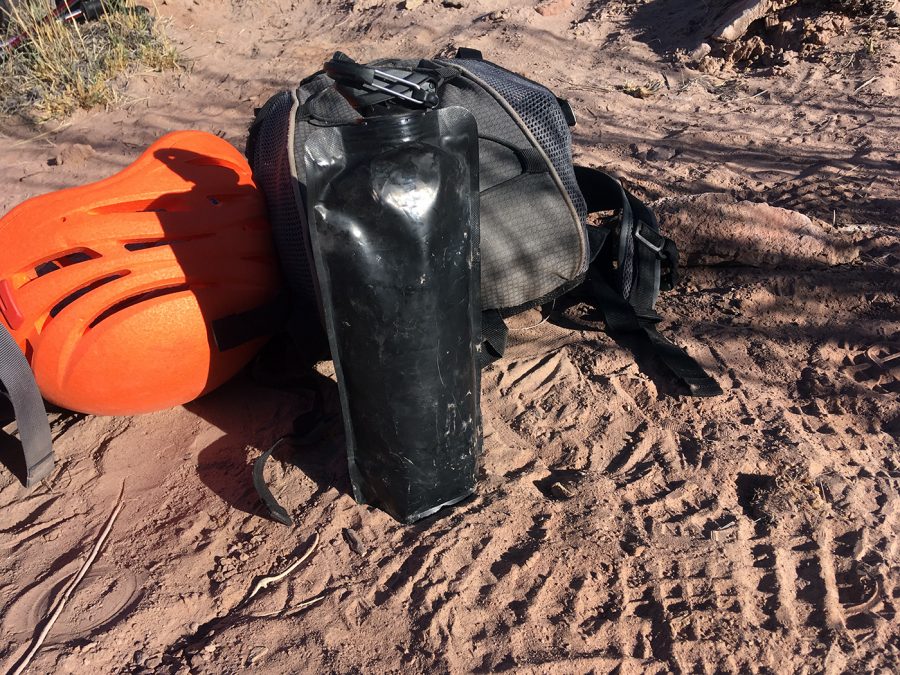 Water is a key part of any adventure and the lighter the carrying vessel the better and this bottle is about a quarter of the weight of a similar capacity hard bottle. Then, the ability for it to fold or roll up when it’s empty can alleviate the all to common overpacking problem (maybe not so much for ultralight backpackers—though packs do get pretty full right after a re-supply). These bottles are BPA free and the removable wide-mouth top makes them easy to wash. I’ve had mine for years now and even with all the folding and rolling it has held its integrity and continues to be the bottle I reach for fist. It comes with a secure pour/sip spout that includes a clip for easy hanging or when the bottle is rolled up it will fit in the clip to stay rolled up for storage. $12 | Buy Now
Water is a key part of any adventure and the lighter the carrying vessel the better and this bottle is about a quarter of the weight of a similar capacity hard bottle. Then, the ability for it to fold or roll up when it’s empty can alleviate the all to common overpacking problem (maybe not so much for ultralight backpackers—though packs do get pretty full right after a re-supply). These bottles are BPA free and the removable wide-mouth top makes them easy to wash. I’ve had mine for years now and even with all the folding and rolling it has held its integrity and continues to be the bottle I reach for fist. It comes with a secure pour/sip spout that includes a clip for easy hanging or when the bottle is rolled up it will fit in the clip to stay rolled up for storage. $12 | Buy Now
Vargo Titanium Dig Dig Tool
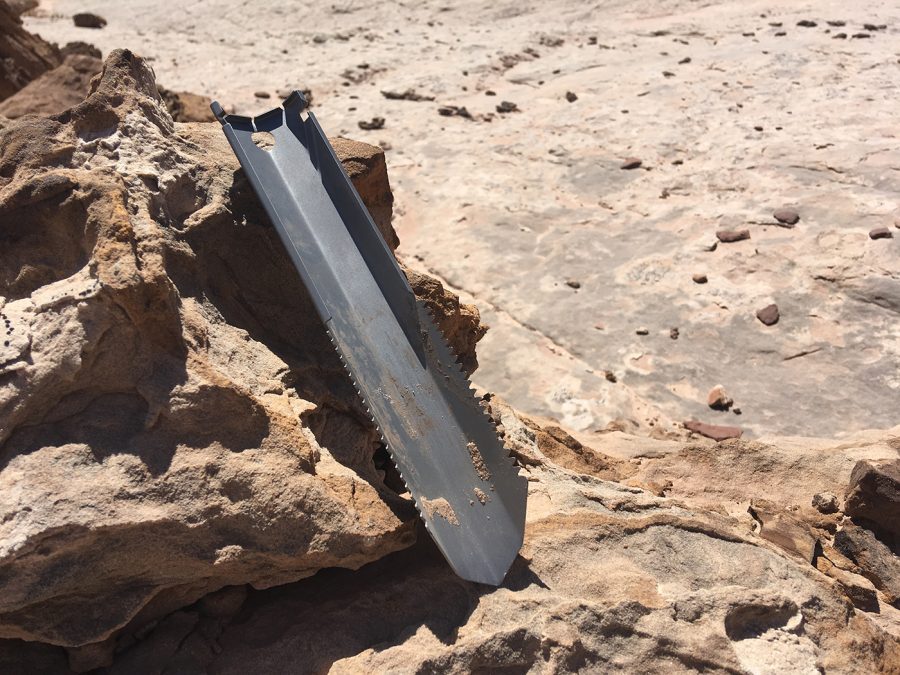 Nature is going to make it’s call at some point while on the trail and when it does it’s best to be prepared. Truthfully, it doesn’t actually take that much to be ready for the call and one key tool in that kit needs to be a good trowel to help abide by the Leave No Trace practices that help us keep the places we play enjoyable places to play. The titanium workers at Vargo have developed one of the best diggers I’ve ever used. The titanium means it’s light and strong and that strength is put to use with serrated edges along the blade to cut through tough roots or even hard ground—it far out-diggs the standard orange trowel. The handle edges are rounded so you don’t mangle your palm and fingers while digging (especially if you’ve put answering the call off a little too long for comfort). The curved nature of the tool has worked well for my packing system and it integrates into my kit perfectly. We awarded this one of our Best New Gear Awards when it came out and we’ve validated that award over and over again. $25 | Buy Now
Nature is going to make it’s call at some point while on the trail and when it does it’s best to be prepared. Truthfully, it doesn’t actually take that much to be ready for the call and one key tool in that kit needs to be a good trowel to help abide by the Leave No Trace practices that help us keep the places we play enjoyable places to play. The titanium workers at Vargo have developed one of the best diggers I’ve ever used. The titanium means it’s light and strong and that strength is put to use with serrated edges along the blade to cut through tough roots or even hard ground—it far out-diggs the standard orange trowel. The handle edges are rounded so you don’t mangle your palm and fingers while digging (especially if you’ve put answering the call off a little too long for comfort). The curved nature of the tool has worked well for my packing system and it integrates into my kit perfectly. We awarded this one of our Best New Gear Awards when it came out and we’ve validated that award over and over again. $25 | Buy Now
Mountainsmith Slingback Chair
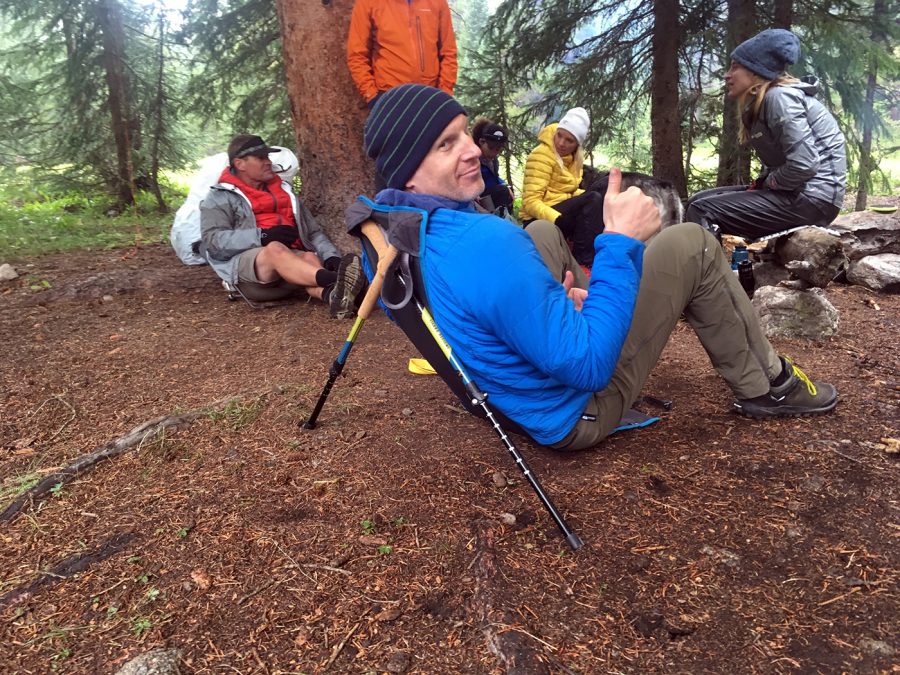 For many in the ultralight backpacking game, this might be too much of a luxury, even for the less than five ounces it will cost in weight. But I like to recline when I’m sitting down after a day on the trail and while I’m pretty good at finding just the right rock and/or tree combination this clever invention proved to be more comfortable and I could put it anywhere there was flat ground. Granted, it only works if you take trekking poles with you and it’s the perfect way to continue to use those poles once off the trail. Looking at this, I, like most, was skeptical if it would even work, but it did. The one downside was the lack of cushion between my bum and the ground. Sitting in this chair was very comfortable, getting up was not very comfortable. I did solve this with another piece of luxury, the Therm-a-Rest Z-seat Pad (which adds another two ounces—I’m sure I’ll be shunned by the ultralight backpacking crowd with this). Nevertheless, once off the trail and sitting down with my pack beside me I was able to get all of my cooking and eating done all while comfortably reclined before hitting the hay. $25 | Buy Now
For many in the ultralight backpacking game, this might be too much of a luxury, even for the less than five ounces it will cost in weight. But I like to recline when I’m sitting down after a day on the trail and while I’m pretty good at finding just the right rock and/or tree combination this clever invention proved to be more comfortable and I could put it anywhere there was flat ground. Granted, it only works if you take trekking poles with you and it’s the perfect way to continue to use those poles once off the trail. Looking at this, I, like most, was skeptical if it would even work, but it did. The one downside was the lack of cushion between my bum and the ground. Sitting in this chair was very comfortable, getting up was not very comfortable. I did solve this with another piece of luxury, the Therm-a-Rest Z-seat Pad (which adds another two ounces—I’m sure I’ll be shunned by the ultralight backpacking crowd with this). Nevertheless, once off the trail and sitting down with my pack beside me I was able to get all of my cooking and eating done all while comfortably reclined before hitting the hay. $25 | Buy Now
Altra Escalante Shoe
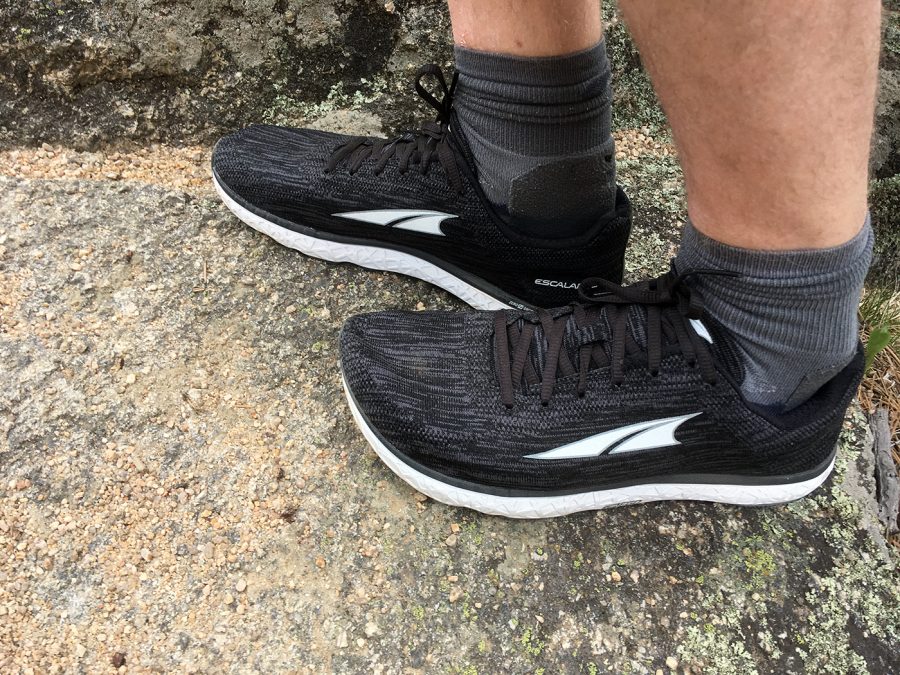 While it’s not targeted as a hiking shoe, the platform on which Altra is founded is one that really appeals to me and has worked well for me on and off the trail. First of all, to be in this roundup in the first place this is an incredibly lightweight shoe weighing only 8.8 ounces (each, size 10 M’s, used—is a little dirty when weighing). Altra shoes are based on letting the biomechanics of the foot do the work the human foot has evolved to do. The foot needs room to splay, or spread out some so the shoe is a little wider than others. It also has a zero drop footbed, meaning, there’s no difference in height between the toe and the heel like there is in a number of different types of shoes on the market, especially running shoes. It’s just how your foot would strike the ground if you weren’t wearing a shoe. It simply provides the protection from the surface being walked or run on. I have a wide foot as it is so finding a shoe that doesn’t constrain my foot was heaven, especially for wearing them all day long and even cranking out a bunch of miles. Altra is bringing their shoe shape and design to casual as well as outdoors specific models and I’m sure you’ll be hearing more about them from me. $130 | Buy Now
While it’s not targeted as a hiking shoe, the platform on which Altra is founded is one that really appeals to me and has worked well for me on and off the trail. First of all, to be in this roundup in the first place this is an incredibly lightweight shoe weighing only 8.8 ounces (each, size 10 M’s, used—is a little dirty when weighing). Altra shoes are based on letting the biomechanics of the foot do the work the human foot has evolved to do. The foot needs room to splay, or spread out some so the shoe is a little wider than others. It also has a zero drop footbed, meaning, there’s no difference in height between the toe and the heel like there is in a number of different types of shoes on the market, especially running shoes. It’s just how your foot would strike the ground if you weren’t wearing a shoe. It simply provides the protection from the surface being walked or run on. I have a wide foot as it is so finding a shoe that doesn’t constrain my foot was heaven, especially for wearing them all day long and even cranking out a bunch of miles. Altra is bringing their shoe shape and design to casual as well as outdoors specific models and I’m sure you’ll be hearing more about them from me. $130 | Buy Now
This post may contain references to products from one or more of our advertisers. We may receive compensation when you click on links to products. For more information about us and our policies, visit the About Gear Institute page.

